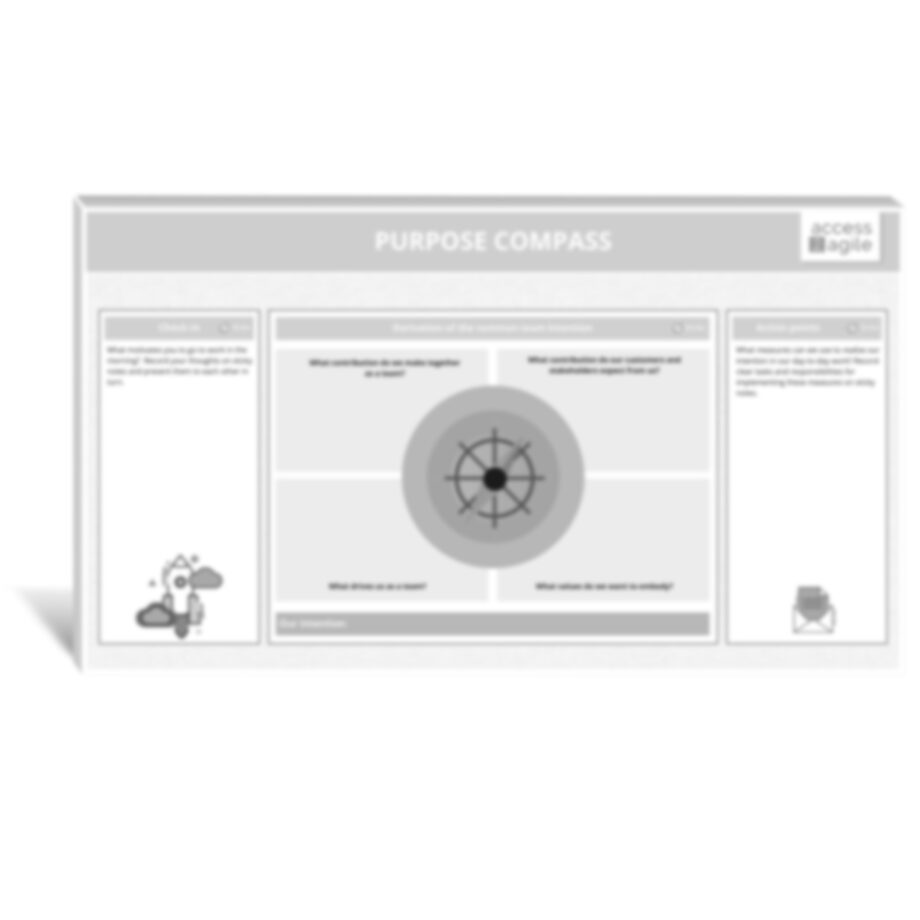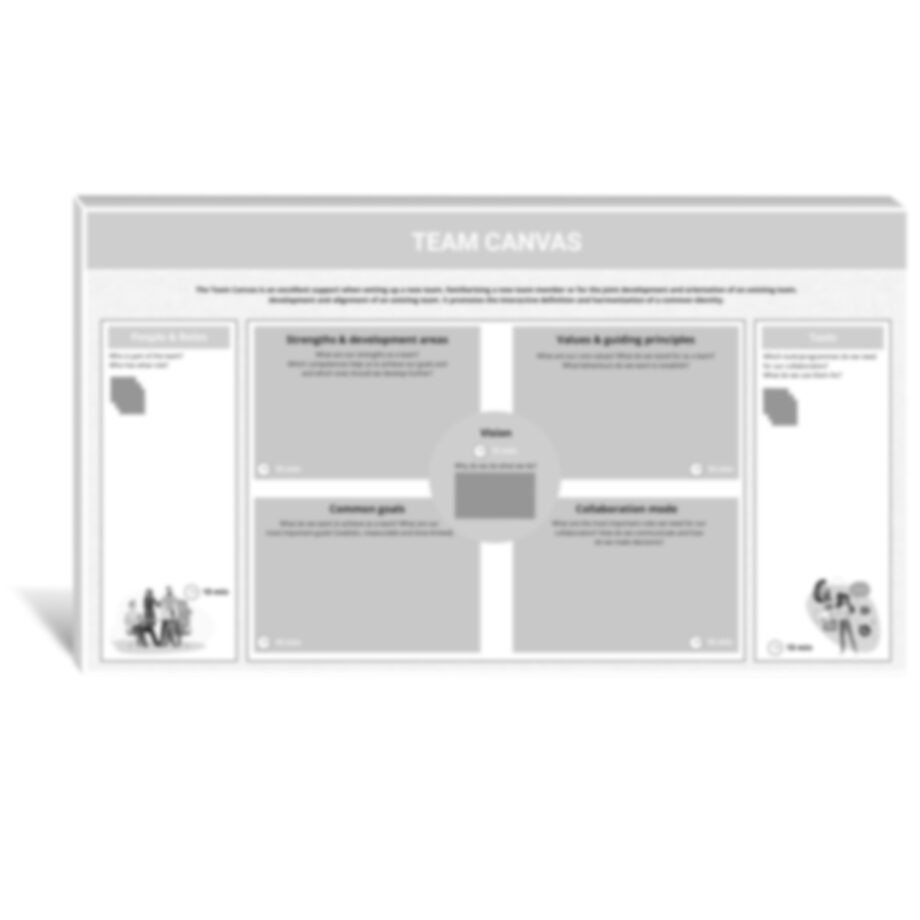Teamwork is often seen as the key to success, but what does that mean? What makes a good team?
In this brief overview of team development, we will try to find out exactly that.
In order to become an effective and productive working environment, individuals, lone wolves and technical experts must first become a well-coordinated team.
Team development takes on precisely this task. Using various methods and techniques, it is possible to increase the effectiveness, efficiency, working methods and well-being of team members.
This toolbox is designed to help you improve your teamwork and communication within the team with the help of methods specifically geared towards team development and to make you a successful, well-functioning team.

There are numerous characteristics by which you can recognize a good [or a dysfunctional] team.
These include, among other things:
- Clear goal: Good teams have a common goal that is clearly defined and understood. This allows the team to focus on a common task and utilize the potential of the members in a bundled manner.
- Open communication: Open and transparent communication in which members can freely express their thoughts, ideas and concerns helps to create a positive and trusting working environment.
If a team is able to share ideas, this can also lead to a greater capacity for innovation. - Trust: A high level of mutual trust is fundamental to effective collaboration. The atmosphere in the team should be respectful, appreciative and supportive.
- Shared values: Good teams share common values and principles that guide their collaboration. This also helps to ensure that the team is focused on a clear direction and common goals.
- Clear roles and responsibilities: Clear roles and responsibilities that are aligned with each member’s strengths and skills help the team to increase the effectiveness of their collaboration and minimize the potential for conflict. Decision-making processes should be understood and accepted within the team.
Examples of dysfunctions could be:
- Focus of team members on status and ego
- Feigned harmony
- Lack of willingness to communicate and cooperate
- Mutual mistrust
- Little assumption of responsibility
- Unresolved conflicts
When should you definitely think about introducing team development measures?
- When a team is newly formed or restructured
- When the team is confronted with change processes
- When cooperation is hampered by a lack of team rules and structures
- If the team’s performance is noticeably declining
- If there are unresolved conflicts
- If the team wants to utilize its potential and increase team performance.
Although every team and every individual is unique, there are recurring patterns in teamwork.
Probably the best-known model for illustrating team development is Tuckman’s phase model (1965).
In his model, he describes five phases that a team usually goes through in order to become an effective unit.

Forming
The first phase of the Tuckman model is the forming phase. In this phase, the team gets to know its members and tries to find common ground. At the beginning of the process, it is therefore very important to create an open working atmosphere that promotes trust and breaks down barriers. The aim should be for the team members to get to know each other and communicate their different perspectives and interests openly and honestly. You can use here for example our Teambuilding-Exercise.
Storming (Sturm)
The storming phase is the second phase of the Tuckman model. In this phase, the team members begin to contribute their own opinions and ideas to the group. In this phase, it is important that the team learns to communicate with each other and resolve conflicts constructively. Open confrontations are important in this phase in order to move the team forward and should not be suppressed. Our Team Canvas can help you to shape these constructively.
Norming
In the norming phase, the team begins to develop common rules and behaviors. Clear responsibilities and work processes are defined, which leads to greater effectiveness and a better understanding of each other. Tools such as our Team Canvas and methods for clarifying roles and expectations help you to organize and structure your team in this phase and create a good breeding ground for productive collaboration.
Performing
The members now focus more on their actual task and leave internal conflicts behind them. They are aware of their roles and responsibilities and trust each other. In this phase, the Team Health Check can help the team to regularly reflect on how they are working together and how they are achieving their goals. The focus is on maintaining and continuously improving team performance to ensure a positive working environment.
Adjourning
The adjourning phase is the final phase of the Tuckman model. In this phase, the team disbands, either because the goal has been achieved or because the project is finished. The team reflects on its experiences and achievements and celebrates its successes.
In the end retrospectives as Start, Stop, Keep or Starfish can help you to document your experiences so that they can be used in future projects.

Team development is an important process for improving cooperation within a group of people.
This is best achieved when the team learns to resolve conflicts constructively, take responsibility and is prepared to support each other.
The aim is to increase the effectiveness and efficiency of the team by promoting trust and cooperation within the team.
Further goals of team development can be
- Creating a basis of trust among each other for a good working atmosphere
- Establishment of cooperation and communication structures
- Appropriate and competent handling of conflicts
- Increasing employee satisfaction
- Development of team awareness
- Increasing self-organized work
- Identifying potential, promoting resources and creating space for innovation
- Increasing the quality and performance of the team
- Creating transparency and establishing a feedback culture
Through team development, team members can get to know their individual strengths and weaknesses and coordinate better with each other in order to achieve their goals more effectively.
This can also help to create a positive working culture within the team, which boosts the motivation and commitment of its members.
In addition, team development creates clarity about roles and responsibilities in the team, which can bring about a significant harmonization of the joint work.
Further advantages of team development:
- Increased employee satisfaction
- Increase in resilience
- Loyalty of employees / development of a sense of togetherness
- Promotion of motivation
- Reduction in personnel costs due to lower staff turnover and lower sickness rates
- Increased productivity, efficiency and innovation
- Development of potential
- Development of conflict resolution skills
Our team development bundle offers you a variety of methods aimed at increasing the effectiveness of your teams and continuously improving collaboration.
Using these seemingly playful templates, you will be encouraged to actively reflect, question and optimize.
Try it out and use the team development templates to take your collaboration to the next level!





